Businesses have always needed to innovate to succeed, but we are now in an era where they need to innovate to survive. The world is still reeling from the effects of the COVID-19 pandemic. One of the things it taught us is that digital business helps make a company resilient to disruptions. Technology innovation is key and has accelerated extremely fast—some analysts say the pandemic has pushed technology innovation forward 5 years!
This so-called tech-celeration is opening huge opportunities for organizations that can adapt, innovate and disrupt. It has become a core part of nearly every company’s business strategy. Yet, as we all know, funding is not unlimited for innovation, for company growth or even to just keep the lights on. To ensure a company’s IT investment can support its innovation-focused business strategy, there needs to be a way to align IT investment management with business strategy.
It can feel like a massive, complex problem to solve—one that spans your company’s strategy at the highest level down to the smallest IT investment decisions. Fortunately, you can manage the entire process in a single platform. To properly create and maintain your investment portfolio to support business innovation, you can follow this 5-step approach using Alfabet:

Step 1: Understand the IT portfolio in the context of business strategy
Start by first aligning your company's IT projects with its strategic business goals. You can use Alfabet to capture the business strategies that your organization would like to execute. This can be done from a top-level vision down to the initiatives that implement the strategy. The path leading to those initiatives includes clearly identifying business goals, objectives and strategic themes. Assign weights within the strategy network for each goal, objective and strategic theme and decide on measures for evaluating the success of your strategy building blocks so you know exactly how much each one matters to your organization.
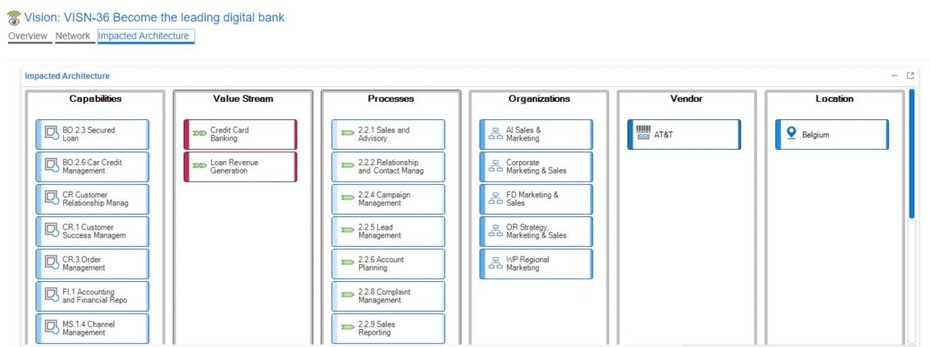
Each of these strategy building blocks can then be associated with the elements in your business architecture that are directly affected. This allows you to evaluate the impact of each business strategy on your architecture to understand the IT effort (i.e. investment) that will be needed to fulfill the business strategy.
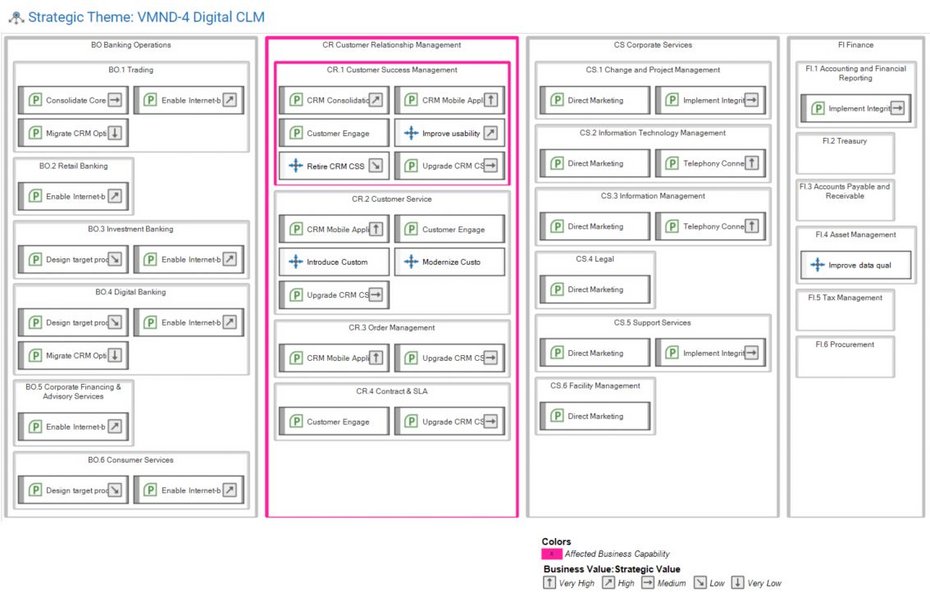
Step 2: Identify focus areas with business capability management
Once your strategy network is in place, break it out into strategic themes. Each strategic theme can act as an individual strategic task in Alfabet that channels into your business objectives and goals.
Then you examine each strategic theme as to what business capabilities are affected to ensure focus on what’s needed to achieve business strategy. For each capability affected by the strategic theme, Alfabet shows you which demands (for projects) and projects exist for the capability. If projects focus on business capabilities that aren’t supporting business strategy, here is your opportunity to take a critical look and possibly divest these projects. If you find gaps where your project coverage doesn’t support key business capabilities, here is your opportunity to invest.
Using business capabilities to map projects to strategic themes allows you to identify the areas you should focus your investment for new initiatives. You can plan for short- and long-term changes based on how relevant and critical a business capability is to you. Strategic business capabilities should always be part of your focus areas.
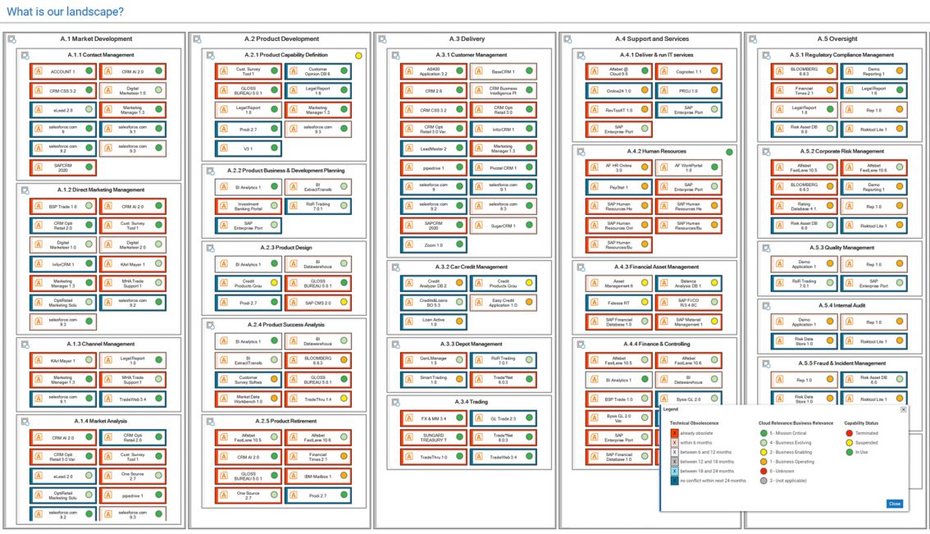
Step 3: Analyze and evaluate the IT landscape
At this stage, you also want to understand how well your current IT landscape supports the business. This will give you another indication of where to initiate IT change (i.e. IT investment). Start by using Alfabet to analyze the existing application landscape and how it is used by your business. Then identify gaps in how your IT supports critical business capabilities, derive the TO-BE architecture and generate the relevant demands for IT change projects.
At this stage, you also want to understand how well your current IT landscape supports the business. This will give you another indication of where to initiate IT change (i.e. IT investment). Start by using Alfabet to analyze the existing application landscape and how it is usedby your business. Then identify gaps in how your IT supports critical business capabilities, derive the TO-BE architecture and generate the relevant demands for IT change projects.
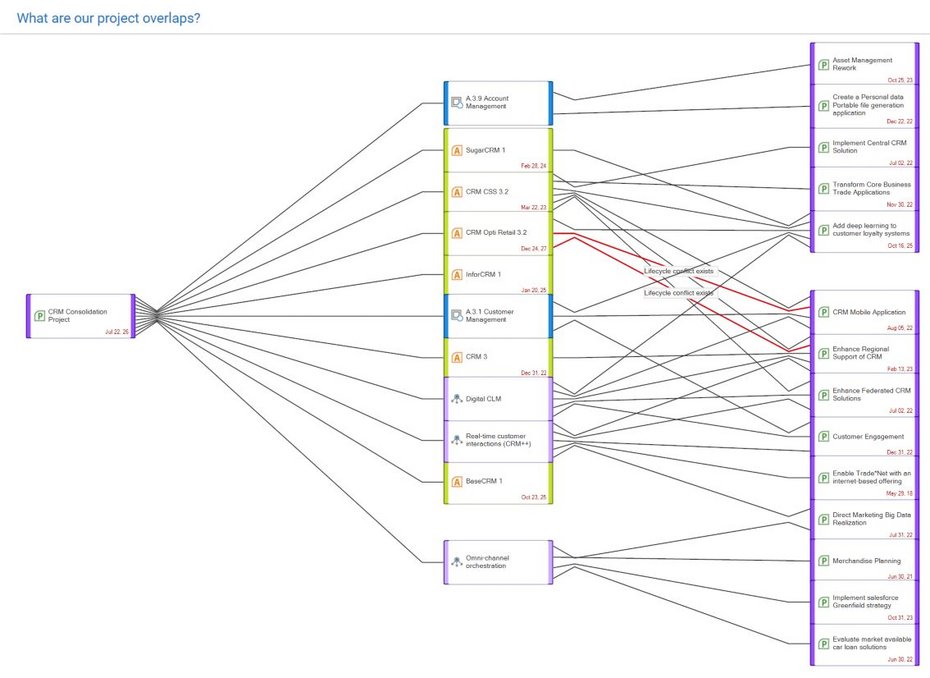
If your current application portfolio is not able to meet your future business needs (new business strategies and goals as per the strategy network), start working on a transformation roadmap.
Further, rationalize application portfolios that support non-critical business capabilities to free up funding for new business strategies and initiatives. Identify applications delivering similar functionality and determine opportunities to consolidate them. Analyze landscape changes over time, detect which applications will be obsolete and identify rationalization opportunities in application-dense capabilities.
Good IT investment portfolio management requires you to constantly optimize your project and application portfolios. Here, you can ask questions such as: How much are we investing in maintaining these applications? And what is our project portfolio cost? Are CapEx and OpEx costs in line with business strategy?
Assess project overlaps as per the architecture they are targeting to change and the business services they are meant to provide. You may find considerable opportunities to consolidate. Look for overlapping business strategies, strategies that are unnecessarily being fulfilled by multiple projects, conflicting business strategies and project lifecycle conflicts with architecture lifecycles.
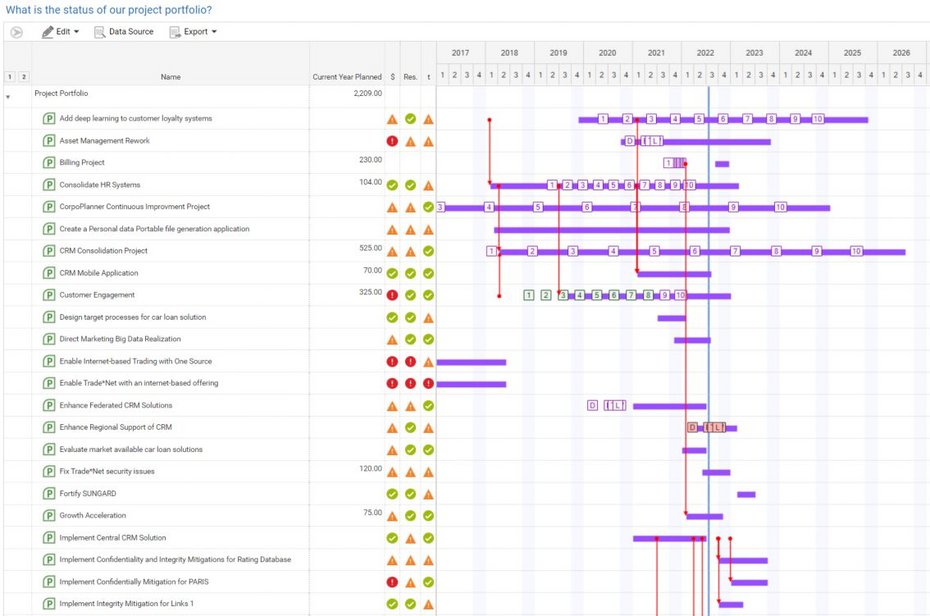
Step 4: Plan the transformation roadmap
By evaluating the applications and technologies that support your business, you can identify the relevant demands which are then channeled to the transformation roadmap. Defining your strategy and the affected projects—aligned to your business capabilities—creates the strategic roadmap for your project portfolio. This strategic roadmap view in Alfabet helps you assess your on-going and planned projects, manage your project portfolio roadmap and track your progress. You can understand the project schedule and manage and maintain milestones along with current and future project costs. This way you can invest in the right areas as per your outlined transformation roadmap, while ensuring that costs are within allocated budgets.
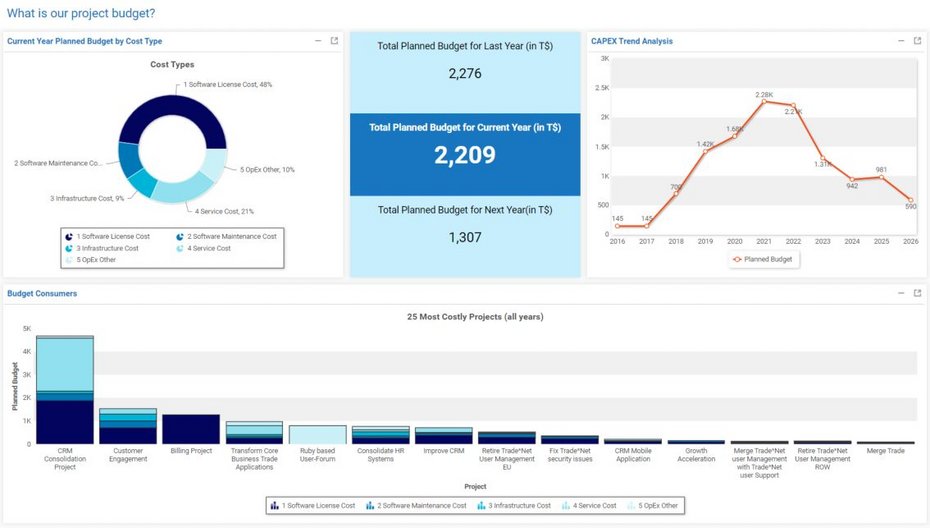
For cost control, you can use Alfabet to evaluate the planned budget costs for your project portfolio for the current year. Make sure you understand which projects consume the most cost and gauge their importance in the overall strategic roadmap of your organization to identify investment and divestment candidates. If a project isn’t supporting mission-critical business capabilities and has high costs, think about delaying that project and focusing on those that will give you more bang for the buck.
Try to understand how much you are spending on individual cost positions such as software maintenance, infrastructure or license costs. This way, you can tweak the overall budget to have funding for your projects. You should also have a clear understanding of year-on-year spending for one project or a set of projects. This provides insights into whether all the investments that you have made so far are heading in the right direction. Or if you need to scale back to control costs.
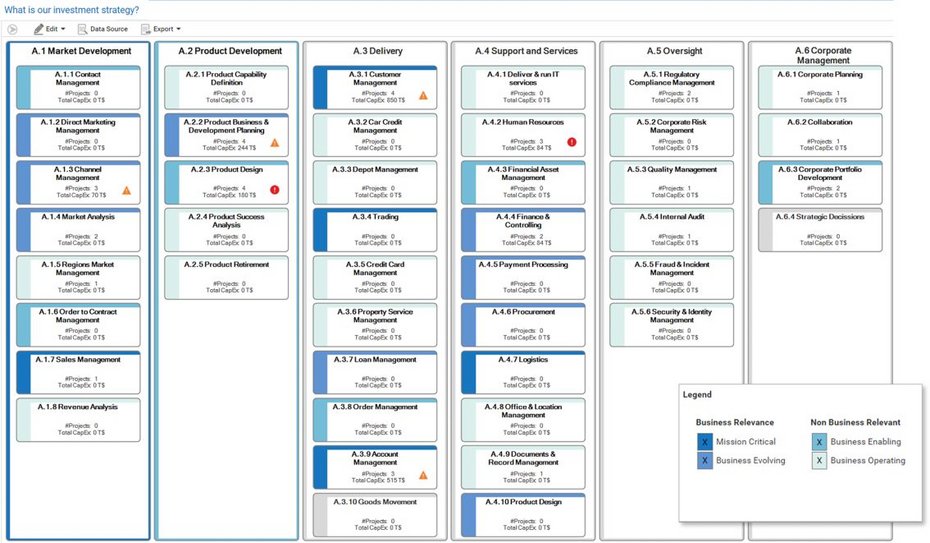
Step 5: Scrutinize, execute and adjust your IT investments
Lastly make sure that your project roadmap is in line with your investment strategy—always. Use Alfabet to scrutinize investment decisions by reviewing the planned project portfolio in relation to the business relevance and forecasted costs to continuously ensure that yourinvestments are in line with the vision and strategy set earlier—or a strategy that has changed.
Constantly examine project efforts and identify underperforming critical projects —projects with a high invest and risk but low business value. Identify overperforming projects with a high business value and low architectural impact to achieve the low-hanging fruit.
Summary
By using Alfabet to take control of your investment portfolio, you can make sure that your IT investments are always completely aligned with your business goals. If you do, you can:
- Eliminate your IT OpEx and CapEx waste with the right IT investment decisions to ensure funding for innovation
- Boost your project success rate by bridging the gap between business strategy and IT implementation
- Pave the way for project completion in time and in budget with the right insights for prioritization and rationalization efforts



